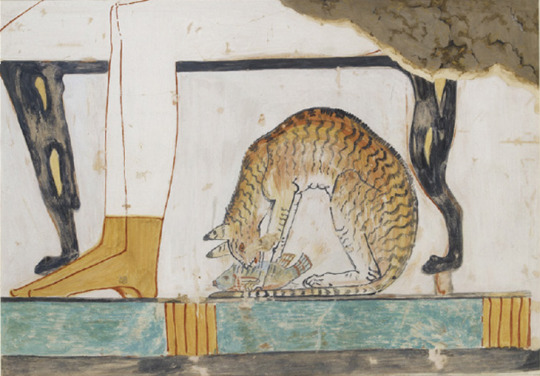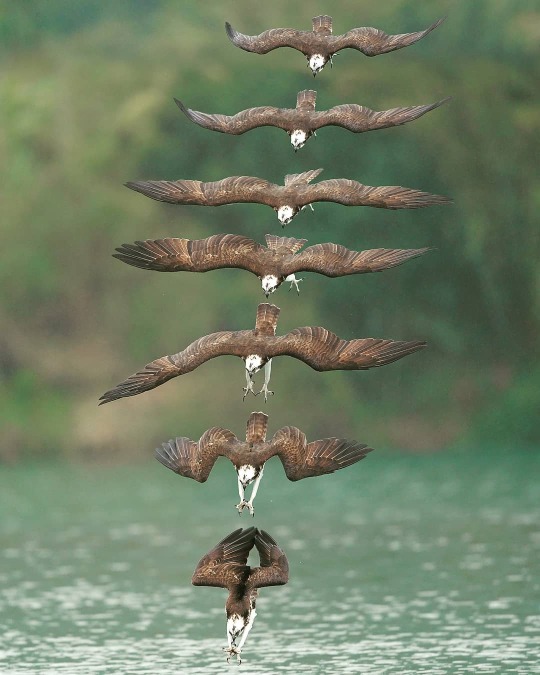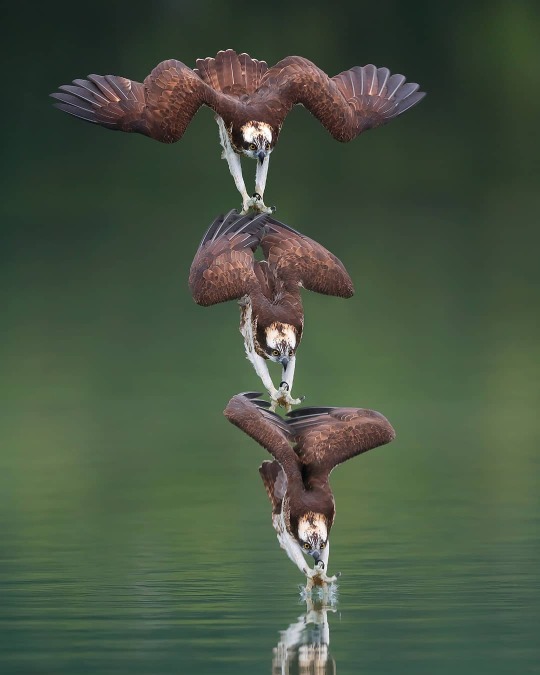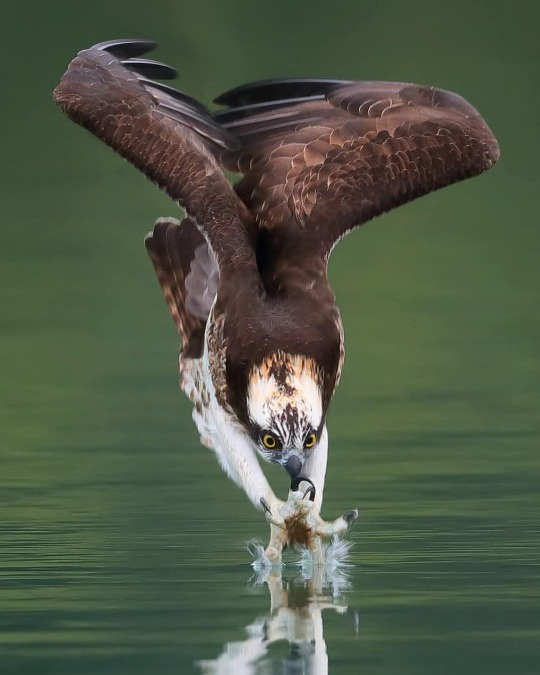Olly, 22. Zoology w/ Herpetology BSc, Wildlife Conservation MSc student. Interests include behaviour, herp husbandry & captive breeding, & tropical ecology! 🦎
Don't wanna be here? Send us removal request.
Video
When you’re sorting the tank filters and a big boye wants cuddles.
(Source)
267K notes
·
View notes
Photo








I always read that some rodents dig with their teeth, but how they did this actually mystified me for a long time….. Other places to see my posts: INSTAGRAM / FACEBOOK / ETSY / KICKSTARTER
18K notes
·
View notes
Photo


This tiny toad is the world’s first Puerto Rican crested toad hatched from in-vitro fertilization (IVF) utilizing frozen semen collected from the wild.
The Fort Worth Zoo and its partners from Mississippi State University came together at the Fort Worth Zoo this summer to continue their efforts with assisted reproduction technology (ART) for critically endangered amphibians. For the first time ever, they were able to successfully conduct IVF using the eggs from two Zoo females and frozen semen from six wild males. To celebrate this conservation success, the first egg to be fertilized and hatched has been named Olaf!
Read more: https://www.zooborns.com/zooborns/2019/12/meet-olaf-the-ivf-toad.html
3K notes
·
View notes
Text
You will meet many disabled and mentally ill people who won’t fit into your idea of how a mentally ill or disabled person is supposed to look and act - and the solution to that is to let them expand your knowledge of what mental illness and disability can look like, not insisting that they aren’t actually disabled or mentally ill because they don’t fulfill certain stereotypes.
13K notes
·
View notes
Link
Owls are silent hunters. Their soft-edged feathers hardly make a sound as the birds fly through the night in search of a meal. Given that stealth, it would make sense that owls are also well camouflaged. It’s no good to sneak up on your dinner only to have it make a quick escape because it saw you coming. But for barn owls, blending in isn’t always the advantage you might think. Having lighter feathers actually helps white owls hunt, a new study finds.
Barn owls can be found all over the world. These crow-sized birds have reddish-brown wings with patches of gray. But their faces, bellies and the undersides of their wings range from all white to all red. That’s true for both males and females. These silent hunters search out voles, mice and shrews, mainly at dusk and dawn. But when they have owlets to feed, they’ll hunt all night long to get enough food for everyone in the family.
Red and white barn owls sometimes catch different amounts of prey. Luis M. San-José works at the University of Lausanne in Switzerland. As an evolutionary ecologist, he studies how species have adapted to their environments. And he wondered if an owl’s coloring had anything to do with its ability to nab dinner.
To find out, he teamed up with Alexandre Roulin, another evolutionary ecologist at the University of Lausanne. Roulin had been studying barn owls in western Switzerland since 1991. He has hundreds of nest boxes on farms in the area. Those owls use the nest boxes. That makes it easy for the scientists to find their nests, catch the birds and study their behaviors.
San-José and Roulin set up night-vision video cameras or camera traps outside 131 of the nest boxes. The pair then recorded activity for three or four nights at each nest box. By studying the video and camera images, they could tally the prey that each owl caught.
The scientists also caught each bird and measured the color of its feathers. They did this using a color key. It rated the hue of the birds’ feathers from very red to very white. Lastly, they recorded the phase of the moon on each night of hunting. San-José says they figured the owls might be well concealed during new moon nights, when the sky is dark. During the brightness of a full moon, they expected white owls would stand out more. That might mean they’d catch fewer rodents than dark-red owls.
All of the owls hunted well during a new moon. The darkness did, in fact, make it easier for these birds to sneak up on their prey. During a full moon, it was the red owls that struggled to catch dinner. White owls had no problem — even though their white feathers reflected the light of a full moon. Further study showed that their extra meals might have had a real benefit: Those white barn owls raised more young than red owls did.
Frozen with fear?
San-José and Roulin were surprised by their findings. Why were white owls so good at hunting, even when they shone like a beacon in the moonlight? Perhaps, they thought, it had something to do with the behavior of their prey. To explore, they set up an experiment with voles. These short-tailed, mouse-size rodents make up more than half of a barn owl’s diet.
The team set up a room with three long sections separated by black cloth. At one end, San-José would place a vole. Hidden at the other end of the room were two taxidermied (stuffed) owls. One was red, the other white. Each had been prepared with its wings out, so they appeared to be flying.
The team uncovered one stuffed owl and then ran it down a zip line. This was to mimic it flying. It also brought the owl straight toward the vole, as if it were about to strike. One hour later, the vole was tested again, this time with the owl of the other color. Tests were run once while the light was low, as if it were a new moon, and again in bright light to mimic a full moon.
Most voles didn’t react differently to red or white owls when the light was low. But in bright light, they easily spotted the red owls coming and hid. More unexpectedly, when approached by a brightly-lit white owl, the voles froze. This is similar to when a deer freezes in front of a car’s headlights. In the wild, this would have given the white owls plenty of time to snatch up some dinner.
In a final experiment, the team coated the feathers of one of the white taxidermied owls with wax. That cut down how much light the feathers reflected. The researchers then ran their tests using the wax-coated owl and an untreated white owl. Voles didn’t freeze when the wax-coated owl swooped across the room. This confirmed that it was light reflecting off the white feathers that “stunned” the rodents.
The findings appeared September 2 in Nature Ecology & Evolution.
“This is one of the first studies to show to us how little we know about living in the dark,” says Robert Zink. He is an bird biologist at the University of Nebraska–Lincoln who was not involved with the study. Diurnal creatures are active most often during the day. “We humans are diurnal creatures for the most part,” he points out. And as such, he says, that makes “it hard for us to understand how nocturnal animals make a living.”
San-José doesn’t know why voles respond to white owls the way they do. But he plans to find out in future studies. “Nocturnal life is far more colorful than we see with our limited vision,” he says. “Many discoveries are awaiting us out there in the dark.”
217 notes
·
View notes
Text
This is the Burmese Roofed Turtle. There are perhaps six of them left in the wild. There’s over a thousand in zoos. This is a very, very good thing.

There are five known females and while nobody’s seen a male in a while… well, we know there’s at least one. Habitat loss and environmental degradation have made this handsome beastie functionally extinct in the wild- but we’re not going to lose them. In fact, there’s a captive population of over 1000, including the 63 that hatched from the 110 wild eggs collected along the Upper Chindwin River in Myanmar.
These hatchlings would not have survived in the wild. There’s too much against them.

Had they managed to hatch, they would have been at risk from predation and resource depletion. They would have been hunted- for collectors, or for food. One of the last wild adults was seen in 2007 in a Chinese market, after all. It’s not safe for this turtle anymore in the wild- but thanks to a carefully managed breeding program and six assurance colonies/reservoir populations located at Yangon Zoo, Lawkanandar Wildlife Sanctuary, Limpha Field Station, Htamanthi Wildife Sanctuary, Mandalay Zoo, and Singapore Zoo, this turtle has a future. Perhaps one day, there will be habitat for the Burmese Roofed Turtle. Perhaps one day, the water will be cleaner, the land in less demand.
But even if it’s not, we won’t lose this species. We’ll be able to tell its story and make it clear that once these beautiful turtles swam in the wild- and they don’t anymore, but maybe one day they will again. Stuff like this is why I get so frustrated with blanket anti-zoo rhetoric. There’s literally no other way to preserve species like this in the actual world that exists today. For some species, in situ conservation is only delaying the inevitable; setting up healthy assurance colonies in zoos where the genetic diversity can be preserved and the species can be propagated is the only way forward. Without these programs, the Burmese Roofed Tortoise would go the way of the baiji or the vaquita. If you’d like to know more about the Turtle Survival Alliance and their work with the world’s critically endangered turtle species, they post a lot of cool stuff on Facebook.
11K notes
·
View notes
Photo



My pet branch wasnt too pleased i woke her up.
74 notes
·
View notes
Note
What kind of frogs do you think are the weirdest/coolest frogs?
Oh, this might need a really long answer as there are such a lot of cool and weird frogs!
Personally, I have a weakness for animals that look chubby and grumpy, so I love Rain frogs (Breviceps sp.)…

(x)

(x)

(x)
…and Horned frogs (Ceratophrys sp.)

(x)
…they have also a great colour variance:


(x)(x)
Glass frogs (Centrolenidae) are translucent…

…and a lot of them have absolutely amazing eyes:

Mossy frogs (Theloderma corticale) live reallly up to their name…

…as does the Malayan leaf frog (Megophrys nasuta)…

…the Pinocchio frog (Litoria sp. nov.)…

…and the Fringe leaf frog (Cruziohyla craspedopus)…

…so Hemiphractus fasciatus (a kind of Horned tree frog) might as well get the name Pyramid head frog :-)

Marsupial frogs (Gastrotheca and Flectonotus) can look quite bizarre when the egg poaches on their backs are occupied…

…whereas Surinam toads (Pipa) look kind of weird whether or not they have eggs and tadpoles implanted:


(x)
The Turtle frog (Myobatrachus gouldii) looks like a turtle that lost its shell :-)


I think I’ll have to stop for now (I could go on for quite a while: Colourful frogs! Poisonous frogs! Shovel-nosed frogs! Striped frogs! Aquatic frogs! Burrowing frogs! Tiny frogs! Giant frogs! Frogs frogs frogs frogs frogs!).
Don’t forget to take a look at the last post about the most bad-ass of all frogs: the Hairy or Horror frog (Trichobatrachus robustus), also known as the Wolverine of the amphibian world :-)

3K notes
·
View notes
Text
i love shrikes because they’re horrible little carnivores whose feeding habits are grim enough to earn then the nickname ‘butcherbird’ but they look like this

182K notes
·
View notes
Text
anyone who is into: reptiles, amphibians, fish, nature things, plants, spiders, insects etc. please reblog so i can find more blogs to follow and interact with!!
also the group chat feature is nice, and i dont mind making a group with some people from the communities listed above!
31 notes
·
View notes
Text


Inuits in the Arctic can survive perfectly on a plant based diet 😤
139K notes
·
View notes
Link
When it comes to revealing when and how wild felines became couch kitties, the cat is starting to come out of the bag. Cats were likely first tamed in the Middle East. Later, they spread — first by land, then by sea — to the rest of the world, researchers now report.
Early farmers brought cats with them to Europe from the Middle East by 6,400 years ago. That’s the conclusion from looking at DNA from 352 ancient cats. A second wave of migration, perhaps by ship, appears to have occurred some 5,000 years later. That’s when Egyptian cats quickly colonized Europe and the Middle East.
Researchers describe how they came to these dates in a new study. It was published June 19 in Nature Ecology & Evolution.
Domestication (Doh-MES-ti-kay-shun) is the long and slow process by which people have adapted wild animals or plants to be tame and useful. Wolves became dogs, for instance. Wild ox became cattle. And wildcats became house cats.
Exactly where and when this happened to cats, though, has been a matter of great debate. Researchers had only the DNA from modern cats to work with. These data showed that house cats had been tamed from African wildcats. What was not clear was when domesticated cats began to spread around the world. Now, new ways of studying ancient DNA are pointing to some answers.
Eva-Maria Geigl and Thierry Grange are behind this deepest dive yet into the genetic history of cats. They are molecular biologists. Both work at the Institute Jacques Monod in Paris, France. Mitochondria (My-tow-KON-dree-uh) are tiny energy-producing structures inside cells. They contain a bit of DNA. Only mothers, not fathers, pass mitochondria (and its DNA) to their offspring. Scientists use slightly different varieties of mitochondrial DNA, called mitotypes, to track the female side of families.
Geigl, Grange and their colleagues collected mitochondrial DNA from 352 ancient cats and 28 modern wildcats. These felines spanned 9,000 years. They came from regions stretching across Europe, Africa and Southwest Asia.

Ancient Egyptians often depicted cats in paintings and statues. Cats were frequently first portrayed as hunters killing snakes. Later, they showed felines curled up under chairs (like this cat from a copy of a wall painting in the private tomb of a man named Nakht in Thebes). That progression may mirror the cat’s transformation from a solitary, wild hunter that captured vermin around ancient farmers’ grain stores to a sociable house pet, say researchers involved in a new study.
CREDIT:ANNA (NINA) MACPHERSON DAVIES © ASHMOLEAN MUSEUM/UNIVERSITY OF OXFORD
About 10,000 to 9,500 years ago, African wildcats (Felis silvestris lybica) may have tamed themselves. They would have hunted rodents and scavenged scraps from the homes of early farmers in the Middle East. People probably encouraged the cats to hang around as a way for these farmers to control mice, rats, snakes and other vermin. The arrangement would have been “mutually profitable for both sides,” explains Grange.
No one really knows how friendly people and cats were with each other at the beginning of cat domestication. Some people may have been very close to their pet cats. Indeed, one person on the Mediterranean island of Cyprus, 9,500 years ago, was buried with a cat. Says Geigl, this suggests that some people, back then, already had close ties to cats.
Before early farmers started migrating from the Middle East to Europe, European wildcats (Felis silvestris silvestris) carried one mitotype. It’s called clade I. A 6,400-year-old Bulgarian cat and a 5,200-year-old Romanian cat had a different type of mitochondrial DNA. They both had mitotype IV-A*. That mitotype was previously seen only in domesticated cats from what is now Turkey.
Cats are territorial and usually don’t roam far. This suggests people must have transported cats to Europe.

Wildcats and early domestic cats all looked the same with tiger-striped, mackerel coat patterns. Now, though, about 80 percent of modern domestic cats carry a mutation that gives a cat a blotched tabby coat pattern. New genetic data suggest this mutation first popped up in Southwest Asia during the Middle Ages. (Boxes in chart represent ancient cats sampled as part of a DNA study. Blue indicates mackerel coats and red the blotched tabby pattern.) The blotched look may have spread rapidly because it helped people distinguish their kitties from all the mackerel look-alikes.
CREDIT: C. OTTONI ET AL/NATURE ECOLOGY & EVOLUTION 2017
Mummies (and more) tell another story
Domesticated cats in Africa — including three cat mummies from Egypt — had yet another mitotype. It’s known as IV-C. Until about 2,800 years ago, that type was found mostly in Egypt. But then it began showing up in Europe and the Middle East. And between 1,600 and 700 years ago, it spread far and fast. By then, seven of nine of the ancient European cats the researchers tested now carried this Egyptian type of DNA. Among them was a 1,300- to 1,400-year-old cat from a Viking port far to the north, on the Baltic Sea.
Thirty-two of 70 cats from Southwest Asia also had that mitotype. That rapid spread may indicate that sailors traveled with cats, some of which could have jumped ship to find a new home.
The speedy spread of the Egyptian cats’ DNA could mean that something made these animals especially attractive to people, Geigl and Grange say. House cats aren’t much different from wildcats. The big difference is that domestic cats tolerate people. And the Egyptian cats may have been particularly friendly. They may have more resembled the type of purring pet found in homes today, the researchers speculate. Earlier house cats might have been more comfortable with people than wildcats were, but still have qualified as scaredy cats.
There’s not enough evidence to say that, counters Carlos Driscoll of the National Institutes of Health in Bethesda, Md. Working at its Laboratory of Comparative Behavioral Genomics, he studies the genetic bases of some behavioral traits. And Driscoll now suggests another reason why Egyptian cats got popular so fast: They may have lived along shipping and trade routes. That would have made hopping a boat to some new port easy, especially if they offered to work as mousers on the ship.
Earlier cats may have been just as popular, Driscoll says, but moving them would have been harder. Those early cats, he says, would have been “dependent on somebody putting a bunch of kittens in a basket and walking across a desert with them.”
357 notes
·
View notes
Text
ADHD: Throws shit everywhere, room becomes messy within at least two days of cleaning it
ADHD: Now I can't focus because everything is everywhere
65K notes
·
View notes






